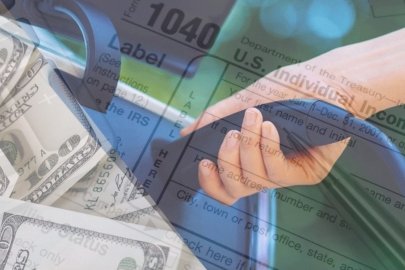One of President Biden's signature accomplishments, the Inflation Reduction Act of 2022 (IRA), has been signed into law. This marks the largest investment in clean energy in our nation's history. Along with its signature companion laws the CHIPS and Science Act and the Bipartisan Infrastructure Law of 2022, the United States is well positioned to reshape its economy for the future and rewire the energy sector that powers it to position the United States to lead the global clean energy market.
This is an enormous opportunity to create good-paying jobs, revitalize communities, improve health, lower energy bills, increase our energy independence by transitioning from a fossil fuel economy to a clean energy economy. For the past 45 years the U.S. Department of Energy (DOE) has played an influential part in developing and proving clean energy’s potential to deliver these goals. DOE and its National Laboratories will now enjoy an historic investment to research, develop, demonstrate, and deploy the next generation of technologies required to complete the clean energy transition while keeping America on the forefront of technological progress.
What Exactly Will the Inflation Reduction Act of 2022 Do?
By 2030, the IRA will:
- double the clean energy workforce to employ nearly 1 million Americans
- provide enough clean energy to power every American home
- GHG emissions will be 40% lower than 2005 levels
- save the average American taxpayer $1,000 a year in energy costs
- deliver a range of tax incentives and rebates that provide direct, material benefits to ordinary Americans.
| Equipment type | Tax Credit Available for 2022 Tax Year | Updated Tax Credit Available for 2023-2032 Tax Years |
|---|---|---|
| Home Clean Electricity Products | ||
| Solar (electricity) | 30% of cost | |
| Fuel Cells | ||
| Wind Turbine | ||
| Battery Storage | N/A | 30% of cost |
| Heating, Cooling, and Water Heating | ||
| Heat pumps | $300 | 30% of cost, up to $2,000 per year |
| Heat pump water heaters | ||
| Biomass stoves | ||
| Geothermal heat pumps | 30% of cost | |
| Solar (water heating) | ||
| Efficient air conditioners* | $300 | 30% of cost, up to $600 |
| Efficient heating equipment* | ||
| Efficient water heating equipment* | $150 | 30% of cost, up to $600 |
| Other Energy Efficiency Upgrades | ||
| Electric panel or circuit upgrades for new electric equipment* | N/A | 30% of cost, up to $600 |
| Insulation materials* | 10% of cost | 30% of cost |
| Windows, including skylights* | 10% of cost | 30% of cost, up to $600 |
| Exterior doors* | 10% of cost | 30% of cost, up to $500 for doors (up to $250 each) |
| Home Energy Audits* | N/A | 30% of cost, up to $150 |
| Home Electric Vehicle Charger | 30% of cost, up to $1,000 | 30% of cost, up to $1,000 ** |
| * Subject to cap of $1200/year ** The IRS will soon publish further information on eligibility requirements related to home electric vehicle chargers, but we know that credits are intended for residents in non-urban or low-income communities. |
||
Home Energy Efficiency
IRA creates a wide range of new and expanded incentives to help households make energy-saving improvements to their home. Energy-efficient investments can help families conserve energy and drastically reduce their utility bills, while also improving health and comfort. New technologies such as energy-efficient electric heat pumps and heat pump water heaters have the potential to save the average households as much as $6,500 in operating cost savings over the lifetime of the equipment, or $650 annually on their utility bills, while reducing exposure to volatile fossil fuel prices.
- A new state program for low- and moderate-income households will provide instant rebates for new, efficient electric equipment, that in some cases will be enough to pay for the entire cost of the new equipment:
- up to $8,000 for a heat pump for heating and air conditioning,
- $1,750 for an efficient heat pump water, and
- $1,600 for improved insulation to prevent energy waste.
- A new state program for whole-home energy efficiency retrofit projects will provide rebates of up to $4,000 for retrofits that will save 35% of energy use or more, and $2,000 for retrofits that achieve savings of 20% or more. These rebates double for low- and moderate-income homes.
- IRA also creates incentives for a range of new energy-efficient appliances and other energy improvements. These credits will take effect immediately, meaning households can claim the credit for purchases they make today. Households can also claim these credits multiple times, for instance if they buy new windows for the living room this year and for the dining room next year.
- Up to $2,000 for efficient heating, cooling, and water heating equipment, such as a heat pump.
- Up to $1,200 for measures that reduce home energy waste, like efficient windows, doors, and insulation.
- A $150 credit to help pay for an energy audit, allowing a local professional to produce tailored recommendations for how you can lower your energy costs with efficiency improvements.
Home Energy Equipment
IRA provides a 30% tax credit for families investing in clean energy systems like solar electricity, solar water heating, wind, geothermal heat pumps, fuel cells, and battery storage for their homes. This can result in valuable savings. For instance, the credit for residential solar electricity will be worth roughly $7,500 for the average household. Considering the upfront cost and average expected savings on electric bills from rooftop solar, the average household can save more than $9,000 over the lifetime of the system, or nearly $400 annually.
Clean Vehicles
IRA provides multiple incentives for the purchase of new clean vehicles like electric vehicles (EVs) and fuel cell vehicles, and for supporting equipment. IRA also marks the first time consumers have been offered an incentive for pre-owned clean vehicles, allowing more consumers to realize the major benefits of switching to clean vehicles. For instance, a consumer switching to an EV can save approximately $11,000 in fuel costs over the lifetime of the vehicle, more than $700 per year.
- For the purchase of a new clean vehicle, consumers can receive a tax credit of up to $7,500,
- For the purchase of a used clean vehicle, consumers can receive a tax credit of up to $4,000, and
- Households can save up to $1,000 towards the costs of a charger in their homes.
Look at the new Energy Saver page on the 2022 Inflation Reduction Act Electric Vehicle Tax Credits for more information.
Take some time to reflect on what this means for the country’s future and celebrate the new opportunities at our fingertips. And tomorrow, let’s get busy making the most of them.
Subscribe to receive updates from Energy Saver, including new blogs, updated content, and seasonal energy saving tips for consumers and homeowners.



